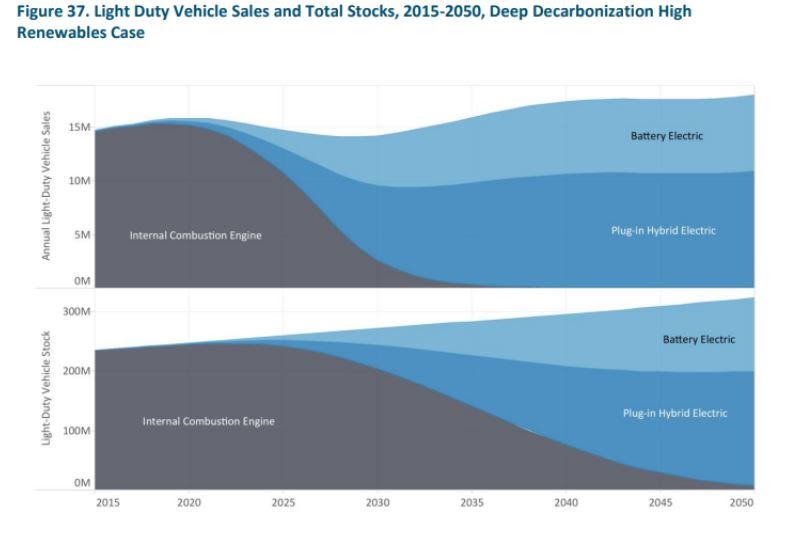The U.S. transportation sector accounts for nearly 30% of U.S. emissions and must be addressed by any legislative or executive agenda for decarbonization. According to the Deep Decarbonization Report, almost all light duty vehicle purchases must be hybrid or electric in 2030 to transition away from gas cars by 2050 — an enormous increase from where we are now, as electric vehicles (EVs) occupy only 2% of the US market.

The transition to an electric fleet will not be fast enough to meet climate goals without significant changes in consumer preferences and EV prices. Sales remain constrained by concerns about range, limited models, and upfront costs. Despite lower lifetime costs of ownership, purchase prices are higher than internal combustion cars due to high battery costs. As I showed here, policies such as subsidies for electric vehicle charging infrastructure can increase EV purchases. Although the diversity of EV models available continues to grow, domestically and globally, sales continue to trail behind.
Democratic presidential nominee Joe Biden’s “Build Back Better” plan includes measures to increase EV adoption. Notably, the recently released plan looks to Senator Chuck Schumer’s Clean Cars for America proposal–a reboot of the 2009 cash-for-clunkers program that would provide federal rebates for hydrogen, hybrid, and electric vehicles purchases following the trade-in of a gas car.
New subsidy programs face many challenges. A minority of EV purchases are linked to current tax credits, which range up to $7,500. Schumer’s $400 billion plan aims to subsidize the trade-in of 63 million cars, creating credits of only $6,000.
Policymakers should take care to make sure that such subsidies work toward public benefit. EVs are going to have to become much more accessible, especially for low and middle-income customers, who thus far have not been able to take advantage of the tax incentives. Schumer’s plan to allocate an additional $2,000 for low-income households is warranted, but seems small given that 90% of credits have gone to households in the top quintile of income, 70% of whom would have purchased an EV anyway.
The cost of the cash-for-clunkers program is another warning sign for renewed efforts. The $3 billion program motivated consumers to buy cars a few months earlier than they would have, but failed to increase cumulative annual purchases. While the program reduced emissions, it did so at the cost of $91 to $301 per metric ton of CO2, without significantly increasing American auto production levels.The proposal endorsed by Joe Biden has some notable differences. Importantly, it has a stronger emphasis on lowering emissions, as credits could only be used for carbon-neutral cars. Given the high level of spending, Schumer’s plan spans ten years, in contrast to its 55-day long predecessor. Still, caution should be taken before restarting a program that achieved low emissions reductions and little job creation, with a higher cost than other programs.
Photo credit: iStock